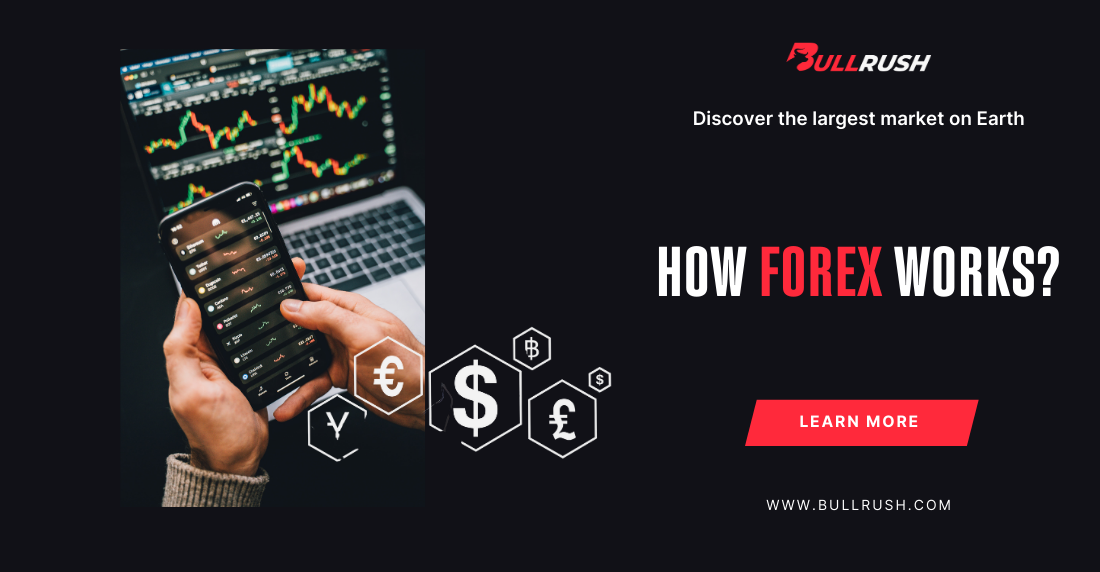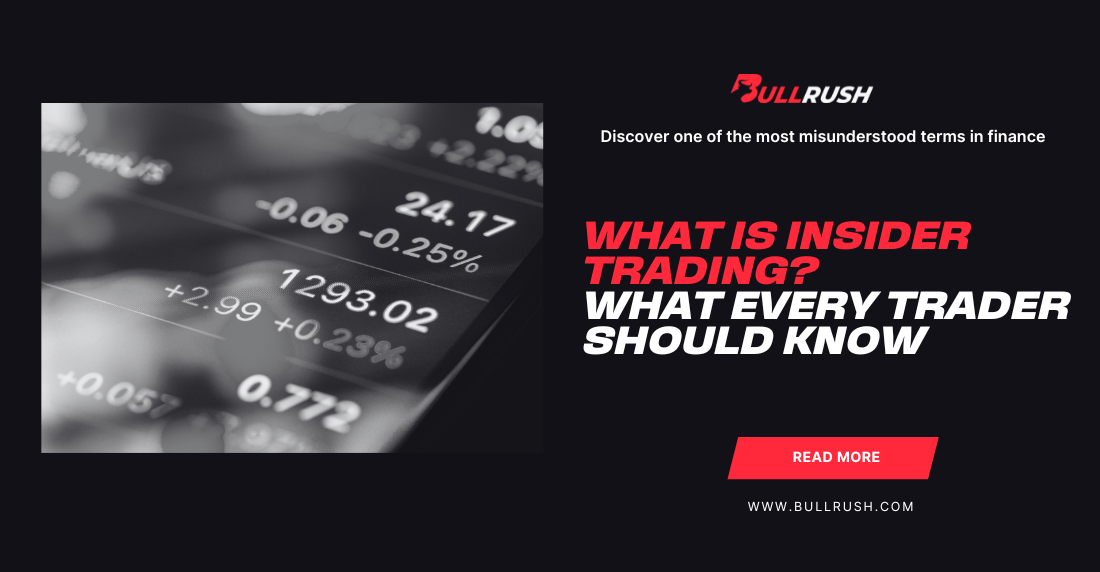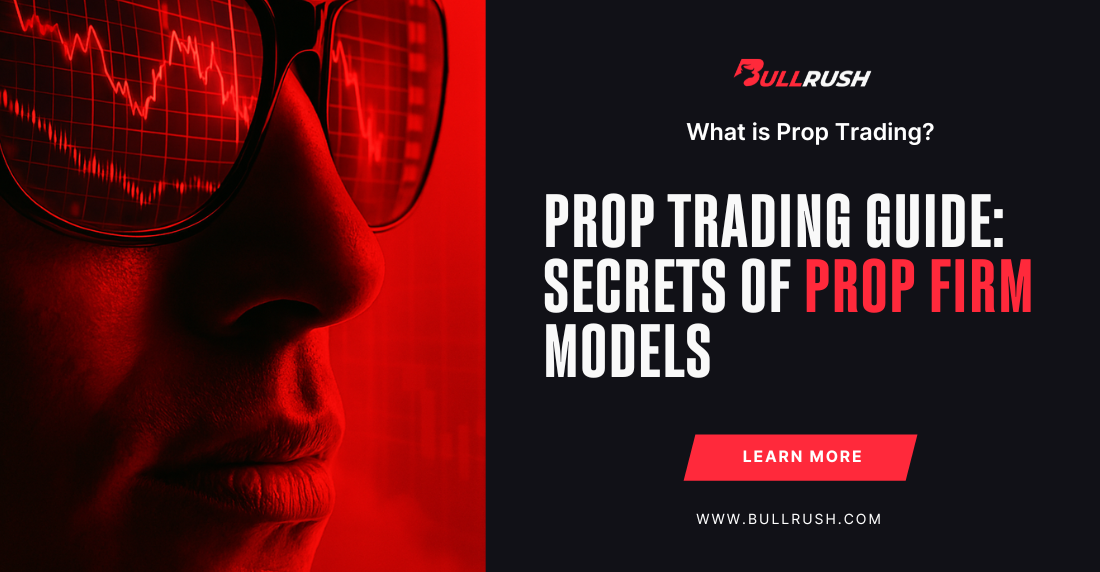
How Forex Works?
Ever exchanged dollars for euros at the airport? You’ve already dabbled in the forex market. But what if that casual transaction could turn into a calculated trade with real profit potential? How forex works, actually?
Forex, short for foreign exchange, isn’t just some background financial engine. It’s the largest market on Earth, moving over $7 trillion per day. That’s bigger than the stock market, the crypto market, and even commodities combined. It runs 24 hours a day, five days a week, and it doesn’t care where you’re trading from. If you understand how it works, you can compete.
We’ll break down exactly how forex works: from the basics of currency pairs and pips to what actually drives the market and how traders at BullRush use it to gain an edge. Whether you’re new to FX or looking to level up, you’re about to get a crash course in the most liquid battlefield in finance.
2. Currency Pairs, Pips, Spreads, and Lots
Every forex trade involves a pair, like EUR/USD, where you buy one currency while instantly selling another. Price shifts are measured in pips; tiny moves typically equal to 0.0001 of a unit. Costs sneak in through the spread, the difference between what you pay (ask) and what you get (bid).
Trades come in standardized sizes: micro (1,000 units), mini (10,000), and standard lots (100,000), so each pip move translates into set dollar values.
Tip: Begin with micro lots to manage risk while mastering pip impacts and spread dynamics.
Summary:
- Currency pairs: base vs. quote; trading is always two currencies.
- Pips = smallest price increment; spreads are trading costs.
- Lot sizes determine pip value and position risk size.
3. Why Forex Moves: Players & Forces
From central banks to corporations to hedge funds, the forex market’s backbone is built by powerful participants. While industry titans, like JPMorgan and Citigroup, shape liquidity and direction, central banks manipulate currencies through interest rates and intervention. Speaking in simple terms, the market is a live response to events around the globe, with sharp fluctuations influenced by news, economic data, inflation, and geopolitics.
In addition, retail traders join via brokers, often using leverage to amplify profits, though this also brings heightened losses.
Tip: Consider using an economic calendar to align your trades with major data releases. This way, you get better timing and risk control.
Summary:
- Central banks, institutions, and news drive FX movements.
- It’s volatile, reactionary, and shaped by world events.
- Leverage is widely available; handle with caution.
4. Pros, Pitfalls & Practical Edge
Think of forex as the uncharted territory of financial markets: quick, adaptable, and constantly active. And with its incredibly low prices, unparalleled liquidity, and round-the-clock accessibility, you can trade your strategy at any time of the day (or night). For modern, active traders, it’s the ultimate arena.
But this open structure cuts both ways. Fewer regulations and high volatility mean one wrong move can empty your account fast. And with counterparty risk baked in, you’re not just trading the market; you’re trusting your broker not to slip the spread or mess with execution.
Veteran traders say it best: volatility is your best friend and worst enemy. Manage it, and you ride the waves to profit. Get caught sleeping, and you’re wrecked in a flash move.
Tip: Protect your downside like a pro. Use tight stop-losses, limit orders, and never leave positions open during major news unless you’re ready for the storm.
Summary:
- Advantages: 24/5 market, liquidity, low costs.
- Risks: leverage, limited oversight, high volatility.
- Smart risk management is mandatory; don’t trade blind.
5. How to Start: Tools, Brokers & Strategy
Getting into forex isn’t just clicking “Buy” on your screen: it’s about building your trading foundation the right way. That starts with picking a regulated broker who won’t play games with your spreads or execution. Look for tight pricing, a platform that doesn’t lag when volatility spikes, and clear access to the pairs you want to trade.
Before risking real cash, hit the demo trading account hard. Think of it as your training arena: an account where you can sharpen your reflexes, test order types, mess around with tools, and build muscle memory without taking a financial hit. Treat it like a warm-up lap before race day.
But don’t just rely on patterns and candles. Combine technical analysis with the raw fuel of fundamental analysis, like interest rate news, inflation reports, and central bank chatter. One gives you timing, the other gives you context. Together, they make your strategy bulletproof.
Tip: Start small. Define your entry and exit before every trade. Track everything. When your performance starts speaking for itself, that’s your cue to scale. Also, learn when not to trade forex.
Summary:
- Choose a reputable, low-cost broker.
- Train with demo accounts before going live.
- Combine analysis types and use clear trading rules.
How Forex Works, Learn it, Own the Race
Forex isn’t just another financial market: it’s a living, breathing contest of strategy, nerves, and timing. Done right, it gives you unmatched access and opportunity. Done wrong, it can shatter your capital fast.
Ready to test your edge where it counts?
Buy a challenge, sharpen your skills, and dominate the market. Join BullRush!
FAQs How Forex Works
Q: What does “going long” or “short” mean in forex?
Long means buying a currency pair expecting the base to strengthen; short is selling it anticipating weakness.
Q: What is leverage & why is it risky?
Leverage lets you control big trades with small capital. It multiplies profits, as well as losses. One sharp move against you, and you’re out.
Q: How is forex different from stock markets?
It’s OTC and decentralized, open 24/5, highly liquid, and allows you to trade both directions on any pair.
Q: What moves currency prices?
Currency prices don’t just drift; they react. Interest rates, central bank policy, breaking economic news, global tensions, and market mood swings all drive sharp moves. When the Fed talks or jobs data drops, FX traders jump.
Q: Can beginners start with low capital?
Absolutely, micro lots and demo accounts let you learn with minimal risk before scaling up.



